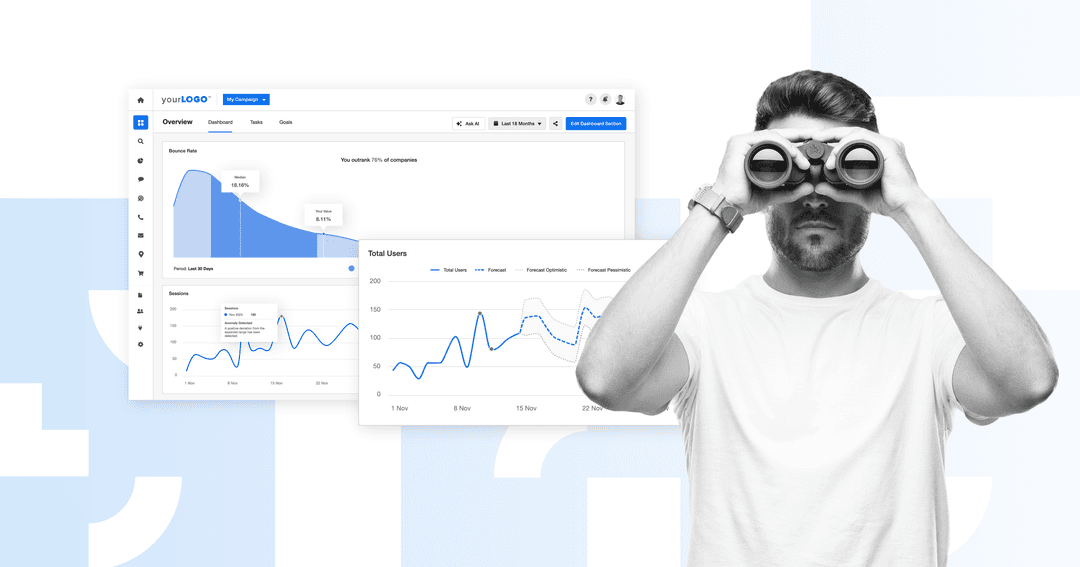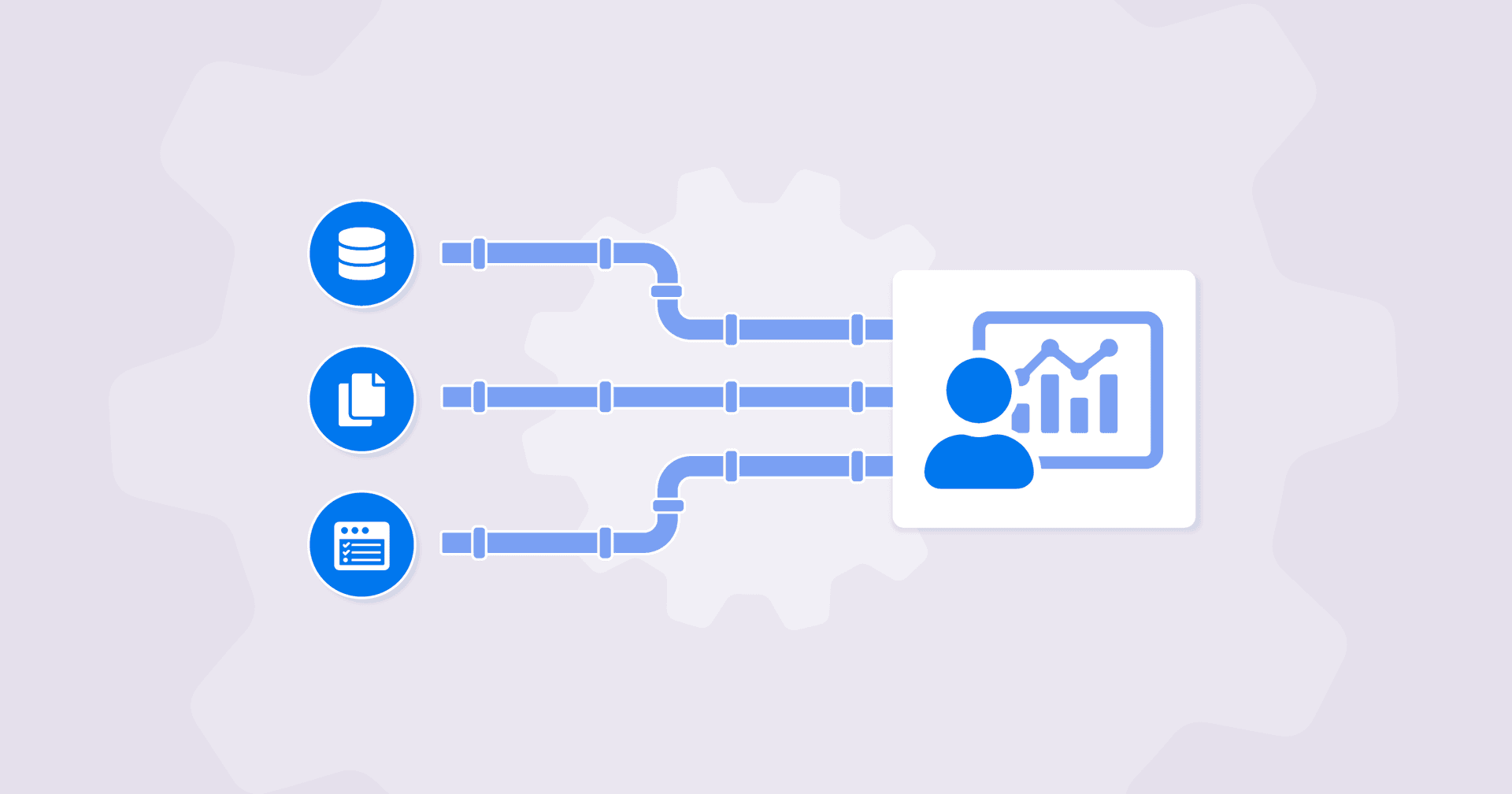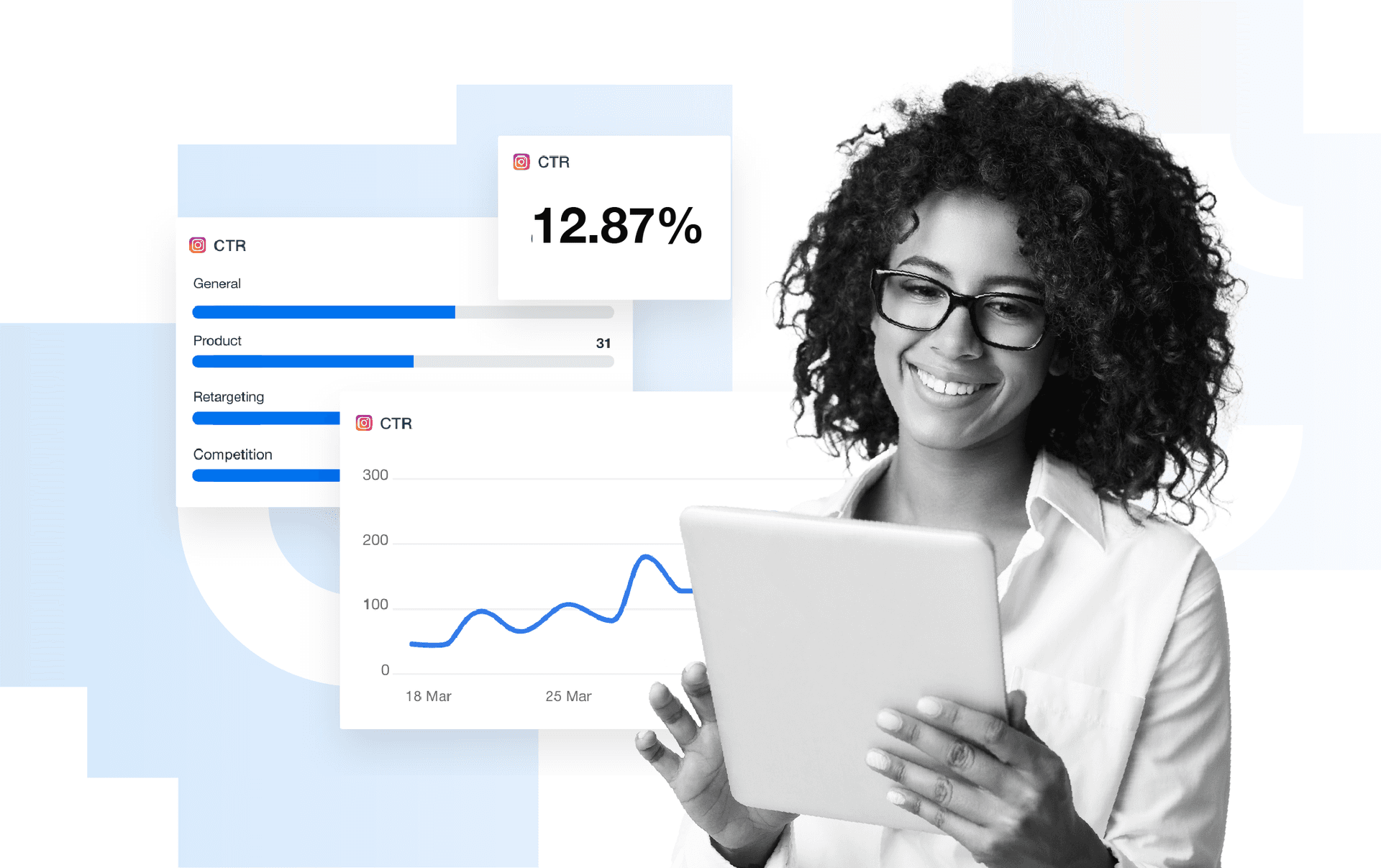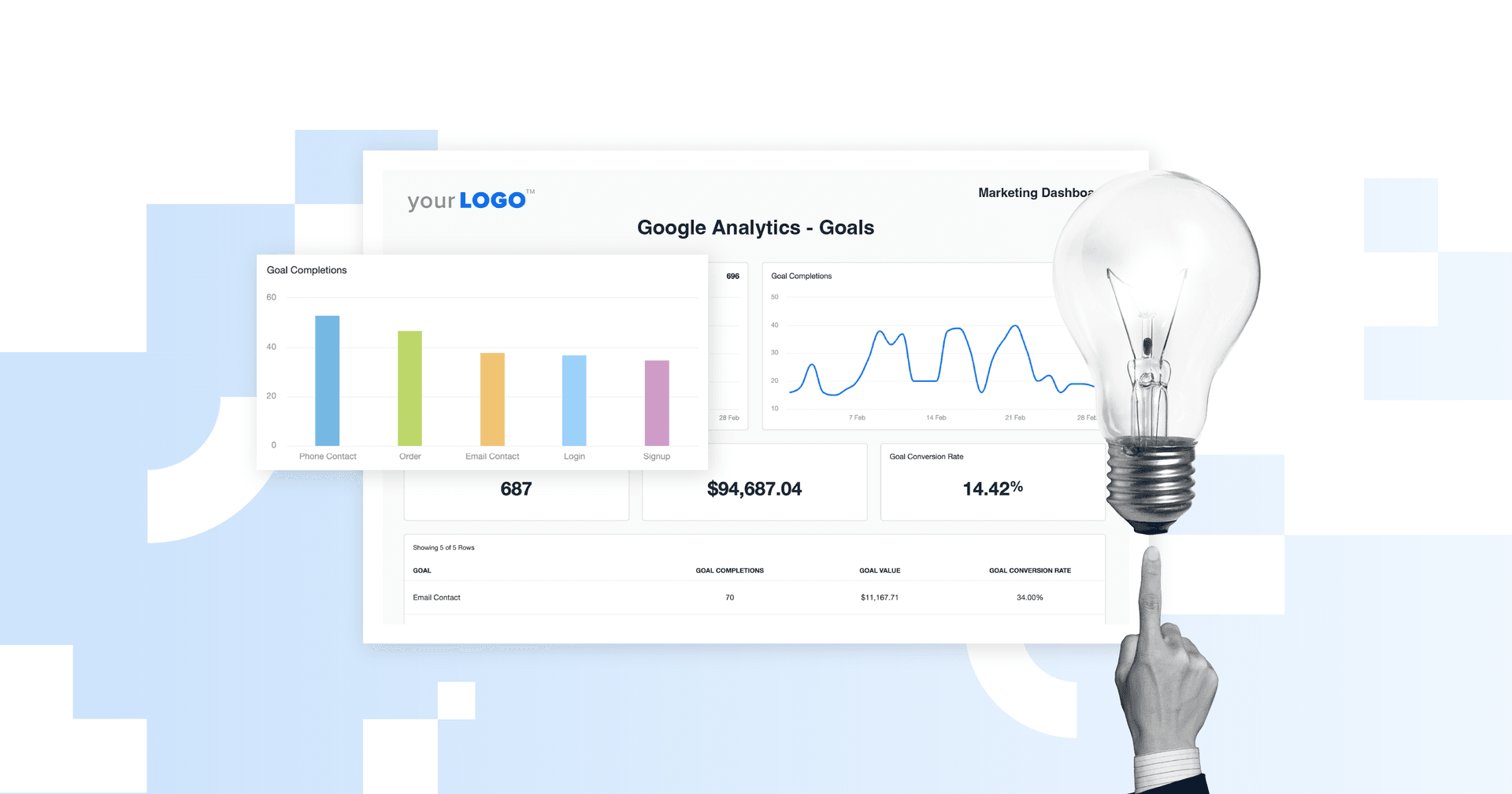Table of Contents
QUICK SUMMARY:
Data-driven insights are actionable takeaways from raw data that uncover trends, patterns, and opportunities. Instead of just presenting numbers, they provide context and help clients better understand campaign performance. This article covers extracting data-driven insights, using automated tools to speed up analysis, and optimizing the reporting process.
Your team just wrapped up a multi-platform, large-scale client campaign–and it was a massive success (hooray!). Numbers are through the roof, engagement is at an all-time high, and it feels like a clear win.
But the work isn’t over yet. In fact, there’s a more critical part to consider: Reporting the results to your client. Suddenly, you’re bouncing between dashboards, piecing together screenshots, and trying to make sense of it all. You know there’s a powerful story somewhere in the data, but extracting it feels more complicated than it should. Sound familiar? You’re not alone.
Raw data may feel overwhelming on its own. When carefully analyzed, though, it reveals the real diamond in the rough: Data-driven insights. Those in-depth findings go beyond numbers on paper, providing tangible explanations of what’s working, why it’s working, and how to optimize for even better results.
In this article, we’ll explain the importance of data-driven insights, why they’re essential for reporting, and how to uncover them with the help of advanced analytics tools.
What Are Data-Driven Insights?
Data-driven insights refer to an actionable understanding of performance beyond surface-level metrics. Think of them as the “aha” moments hidden in the numbers. They’re used to provide explanations, uncover patterns, identify cause-and-effect relationships, and even replicate success.
So, why are data-driven insights important? For added context, here’s how raw data sounds in comparison to a data-driven insight:
Raw Data: “Website traffic increased by 20% last month.”
Data-Driven Insight: “The traffic spike was driven by organic search, with blog posts optimized for long-tail keywords seeing a 35% increase in clicks. Based on historical data over the past six months, we’re happy to report your SEO efforts are paying off! To keep the momentum, we recommend further investment in content marketing.”
The difference between raw data and an insight? One tells you what happened. The other helps you make it happen again—only better. In other words, the real value comes from uncovering reasons behind performance and turning that knowledge into action.
This approach also provides a competitive advantage for your agency and sets the stage for continuous improvement.
Why Data-Driven Customer Insights Are Vital
While gut instincts still have a place in marketing, clients expect more.
They want proof their investment is paying off (understandably). And the only way to show it is through–you guessed it–data-driven insights. When every recommendation is backed by solid numbers and framed with clear data storytelling, it says, “Hey! We know what’s working, why it’s working, and how to keep improving.”
Our internal mantra is to always bring the receipts. We track and report the actual effects of our strategies. Our narratives are structured to remind clients of their initial goals, outline the strategic actions we took, and demonstrate the outcomes. That way, we can illustrate a direct line from our actions to their growth.
Ruben Roel, President, Investigator Marketing
That said, it may not seem feasible to interpret data for every client on your roster. After all, you’ve got deadlines to meet, meetings to attend, and many other things to do. However, if clients don’t see the true ROI of their campaigns, they probably won’t value your agency’s services.
So, what’s the solution? Leveraging data analysis tools. They’re used to automatically generate narrative-rich insights, which saves time and ensures your reports remain results-driven.
Many of these platforms now incorporate AI-powered capabilities—and for good reason. In seconds, AI has the ability to analyze vast datasets, identify key trends, and surface meaningful takeaways that might take hours to uncover manually. It highlights what’s working, flags potential issues, and even identifies not-so-obvious patterns.
Simply put, AI is here to stay and should be used to your agency’s full advantage. It’s a time-saving way to take the hassle out of data analysis, maximize billable time, and provide tremendous value to clients.
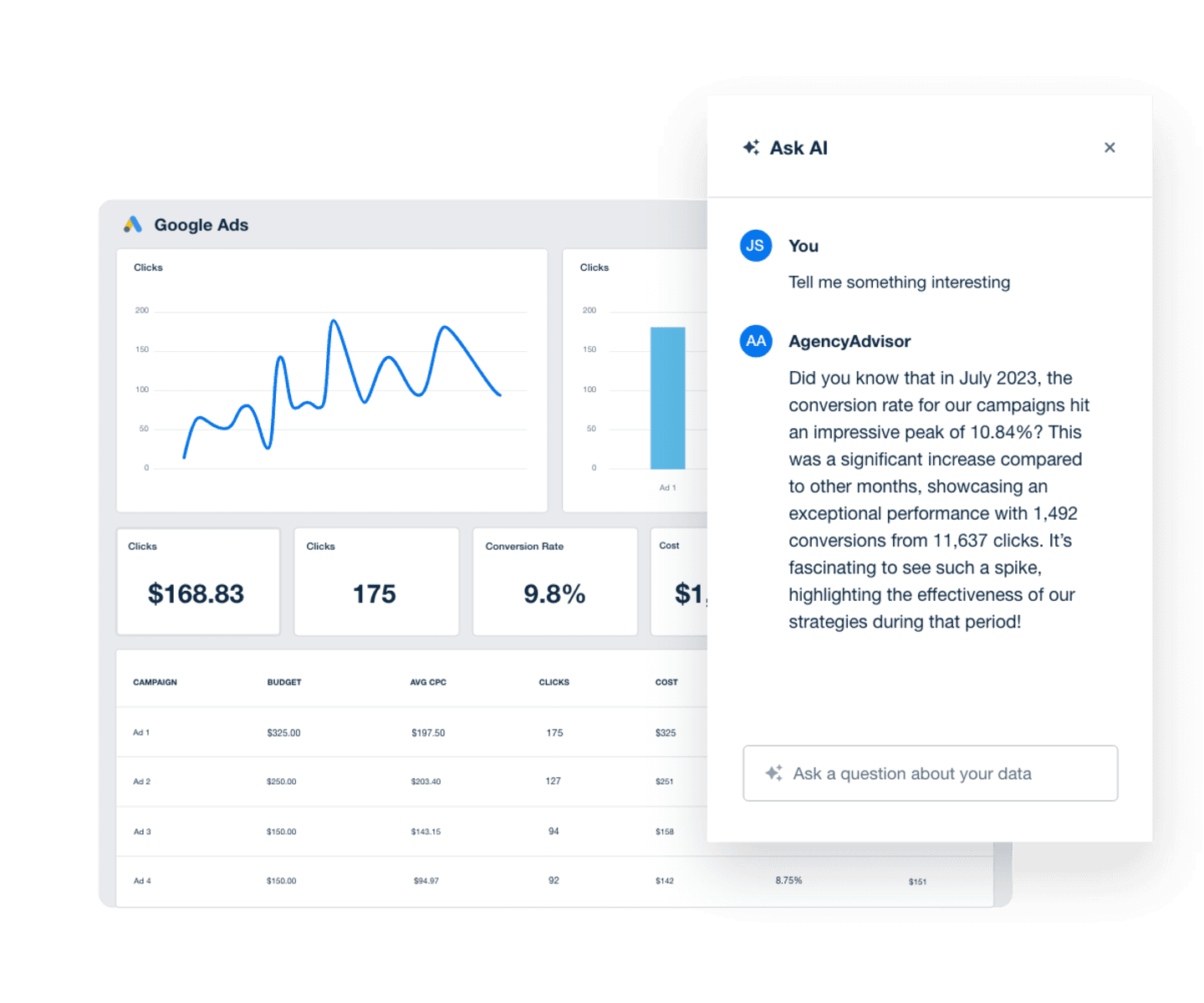
Ask AI is like having a personal team of data analysts. Analyze big data sets, conduct a trend analysis, and quickly generate actionable insights–try this feature in AgencyAnalytics, free for 14 days.
How To Uncover Data-Driven Insights in Your Marketing Assets
Finding actionable insights doesn’t have to be a slog.
With a strategic approach, you’ll uncover data-rich insights that help your clients hit their business goals faster. Here’s how to go from simply collecting numbers to delivering clear, data-driven insights.
1. Start With Clear, Data-Driven Goals
Before diving into the data, consider this: What does my client want to achieve?
Whether it’s increasing conversions or improving ROI, clear goals will ensure you’re looking at the metrics that matter.
It’s really easy in life and business to just flow following the status quo. Without setting aggressive goals, it’s very possible to look back on the past quarter or past year and see that your business is no better off now than it was in the past. If you want to grow or want to improve, you need to think about what that looks like and then make a plan to achieve it.
Jens Rhoades, Owner, Floodlight SEO
To get started, ask questions like:
What is the primary business objective behind this campaign?
What specific outcomes matter most to the client (e.g., more leads, higher engagement, or better customer retention)?
Which key performance indicators (KPIs) align with those goals?
How does success look for the client—both short-term and long-term?
Is there a timeline for achieving these goals?
When data is tied to a defined objective, it’s easier to spot trends, identify what’s working, and ensure campaigns run smoothly.
2. Centralize All Relevant Data
Scattered data is one of the biggest roadblocks to finding data-driven insights.
When performance metrics are spread across different tools, it’s easy to lose sight of the bigger picture. Plus, pulling things together by hand often means missed opportunities, wasted time, and inaccurate conclusions.
That’s why a centralized reporting hub is non-negotiable. It eliminates the need for manual data collection, ensuring your agency remains agile and focused. Here are some advantages of investing in this type of tool.
Benefit | Description |
|---|---|
Enhanced Efficiency | By streaming data into one place, your team won’t have to compile metrics across multiple tools. This efficiency frees up time for analysis, strategy, and campaign optimization. |
Comprehensive Insights | Centralized data makes it easier to spot trends, anomalies, and spikes at a glance. It also streamlines cross-channel analysis, helping your agency paint a more holistic picture of marketing performance. |
Greater Accuracy | By automating data retrieval, you won’t have to worry about oversights or typos from manual data entry. It reduces the risk of mistakes, especially if you have a growing roster and increased campaign complexity. |
For best results, choose a reporting tool that integrates with the platforms you already use. This will reduce friction and allow for a truly automated reporting process.
What You Can Do With Accurate Data
Speaking of accurate data, why does it matter?
Without reliable data, even the strongest marketing strategy is just a guessing game. Therefore, it’s the only way to make an impact and help clients reach their goals.
Accuracy is extremely important because it allows our clients to make important decisions as the data rolls in. As an agency, it allows us to advise based on the data for a better return on their investments.
Vinod Samuel, Operations Director, myheartcreative
Relying on accurate data makes it easier to:
Pinpoint What’s Driving Success: Understand which channels, content, and tactics deliver the highest ROI.
Identify Areas for Improvement: Spot inefficiencies, drop-off points, and underperforming campaigns before they become more significant issues.
Optimize Strategy With Confidence: Inform business decisions based on real data trends, not assumptions.
Prove Value to Clients: Show clear, data-backed results that reinforce your agency’s expertise and strategic direction.
3. Use AI Reporting Capabilities To Infuse Data Storytelling
There’s no substitute for deductive reasoning, expertise, and experience.
That said, there is a way to uncover data-driven insights and drive your message home–all in a fraction of the time. By using a tool with AI-powered reporting capabilities, you’ll save time from manually sifting through massive datasets or trying to piece together a cohesive narrative.
In a few seconds, use AI to identify trends, spot anomalies, and even generate a text-based performance summary. It’s like skipping the haystack and going straight to the needle—giving you more time to focus on strategy and client communication.
Using the AI features in AgencyAnalytics helps us summarize a client report much faster than reading through results, typing up an email, and sending it to the client. The predictive analytics in Ask AI has certainly increased our productivity, helping us to do things much faster.
Kevin Watts, Founder, Raincross
By integrating AI into daily workflows, you’ll gain more clarity, optimize strategies with speed, and provide clients with solid data-driven insights.
4. Monitor Real-Time Performance and Emerging Trends
Waiting till the end of the month to analyze results?
This could lead to campaign hiccups or avoidable oversights. It’s precisely why agencies must have a system to track real-time performance.
Use a dashboard to monitor key metrics, spot emerging trends, and make timely optimizations. Whether it’s a sudden surge in engagement or an underperforming ad set, real-time data ensures decisions are proactive, not reactive—helping maximize results before it’s too late.
Tracking where performance is headed—not just where it stands today—also ensures clients remain competitive.
That’s where benchmarks come in. They provide a clear point of comparison, measuring campaigns against industry standards to highlight strengths, weaknesses, and opportunities for improvement. It also demonstrates that you’re a forward-thinking agency that values long-term success.
Data-Driven Decision-Making Tools Do the Thinking for You
Now that we’ve covered the basics of data-driven insights, it’s time to explore the best tools for streamlining analysis–here are our top five picks.
1. AgencyAnalytics
Need a tool built specifically for agencies?
AgencyAnalytics is an all-in-one reporting platform designed to streamline client reporting and data analysis. Say goodbye to manual spreadsheets and juggling multiple tools—everything is easily accessible in one place.
With seamless integration across 80+ platforms, you’ll speed up data analysis, gain a complete view of performance, and deliver clear, actionable insights to clients.
AgencyAnalytics takes all the grunt manual work out of reporting, saving you a lot of time to work on your clients' campaigns and your business instead of playing around with spreadsheets and screenshots of results. AgencyAnalytics does it all for you.
Deniz Doganay, Managing Director, Digital Debut
AgencyAnalytics offers several data-driven features, including:
Ask AI: Analyze data analytics across multiple campaigns in just a few seconds. Quickly identify trends, pinpoint areas for improvement, uncover potential business opportunities, and highlight overlooked wins. It’s as easy as using a pre-defined prompt or asking a custom question about your client’s results.
AI Summary: No need to spend hours manually creating report overviews. Instead, use this feature to highlight key takeaways and campaign performance–all in simple terms that non-technical stakeholders will understand.
Visual, Real-Time Dashboards: Access a range of pre-built dashboards for top platforms like Google Ads, Facebook, and more. Need a bit more customization? Build one from scratch, replicate sections from an existing template, or even generate an 11-second Smart Dashboard that auto-populates with your client’s unique data.
Marketing Performance Insights: Wondering how client campaigns stack up? Compare performance against reliable industry trends, built from first-party data across 150,000+ campaigns on the AgencyAnalytics platform. Even share forecasted trends and detect performance anomalies!
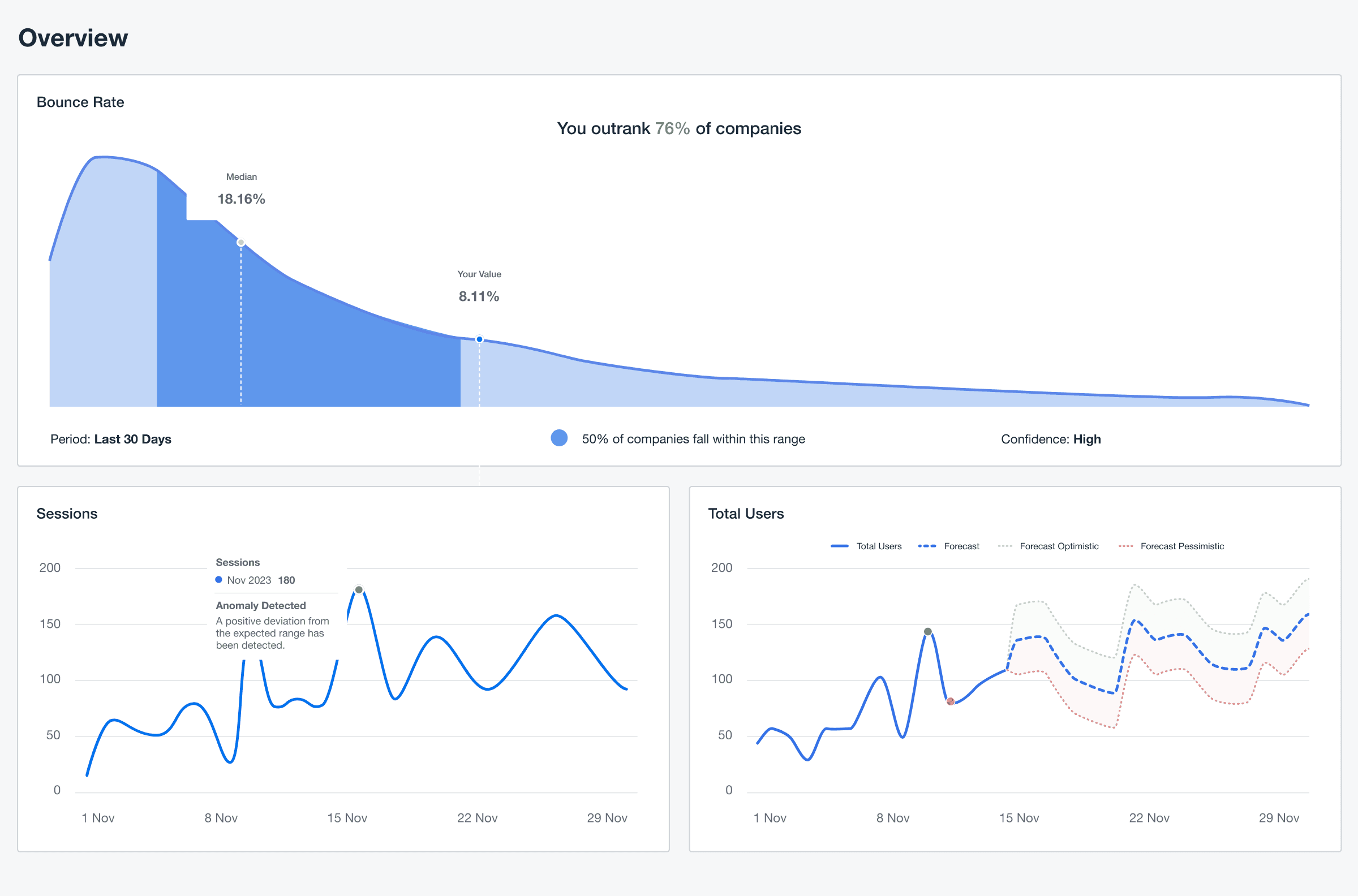
No need to conduct external market research. Use AgencyAnalytics to access market trends and benchmarks specific to client industries–sign up for a free 14-day trial today.
AI-powered reporting, client-ready dashboards, and cross-platform data integrations? Yes, it’s possible to have it all (and then some)! Use AgencyAnalytics to deliver value, streamline reporting, and provide data-driven value to clients.
2. Google Analytics
Google Analytics is a staple for most agencies, providing a way to assess traffic trends, track customer behavior, and evaluate SEO performance. There are a host of data-driven features, including:
Cross-Device Tracking: Get a clearer picture of how users interact with client campaigns across devices.
Event Tracking: Monitor specific user interactions–such as form submissions, video views, and button clicks–to understand engagement.
Traffic Source Analysis: Break down where visitors are coming from to refine acquisition strategies (e.g., organic search, paid ads, social media, or referrals).
Google Analytics Intelligence: Use AI-driven insights to automatically detect traffic spikes, unprecedented drops, and overall performance trends.
While there’s a wealth of available data, visually, things may get a bit complicated. There’s a solution: Use the Google Analytics integration in AgencyAnalytics.
That way, you’ll have a simpler interface and quickly access web analytics insights for data-driven decisions–whether that’s through Ask AI or your own interpretation.
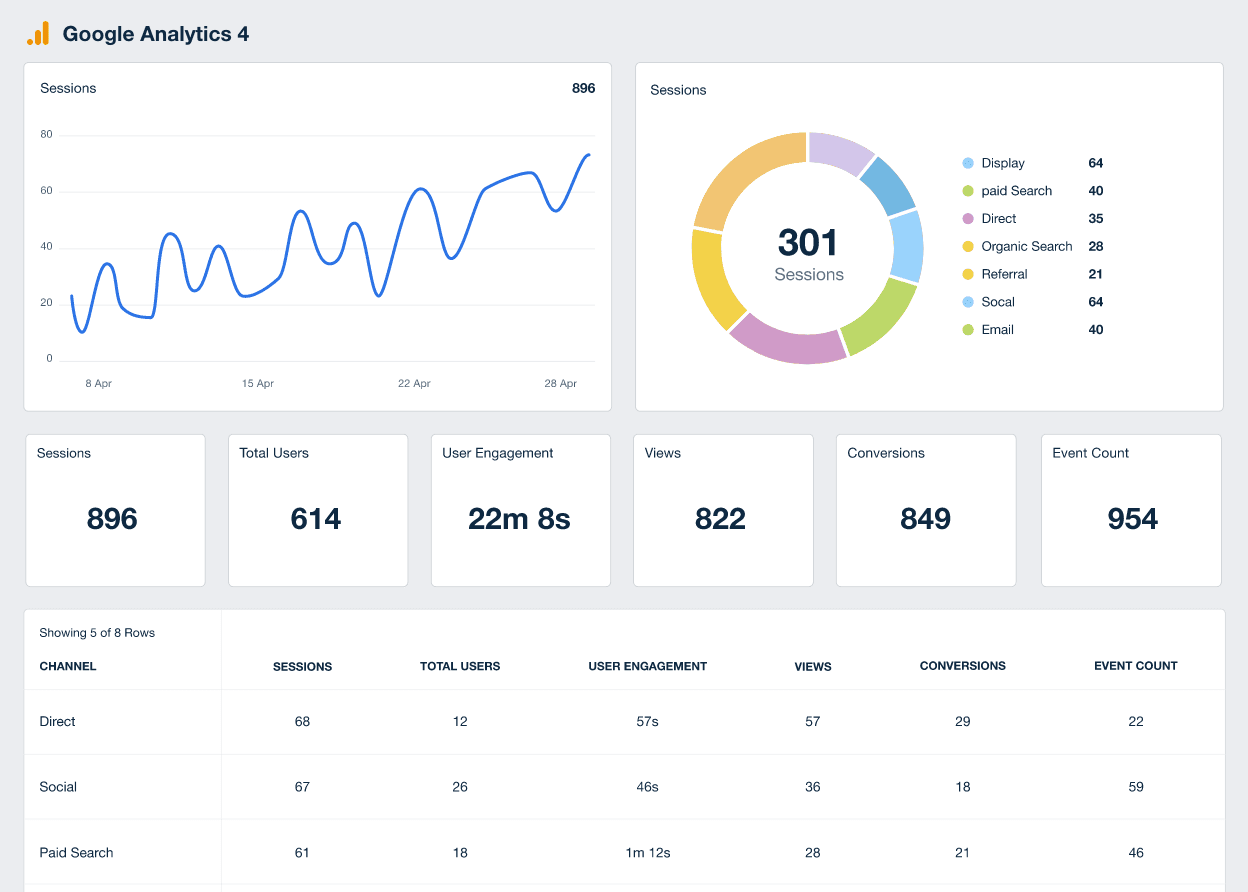
3. HubSpot
HubSpot is a powerhouse CRM used to house customer data, track sales cycles, and ensure sales and marketing alignment. Some standout data-driven insights include:
Lifecycle Analytics: Monitor leads as they move through the funnel and identify bottlenecks that slow conversions.
Attribution Reporting: Connect marketing efforts to revenue, which helps clients see which campaigns drive real business impact.
Sales Pipeline Analysis: Identify deal trends, conversion rates, and pipeline velocity to optimize the sales process.
AI-Driven Data Insights: Use AI to streamline workflows, improve efficiency, and enhance customer interactions.
Got clients that use this CRM alongside other marketing platforms? Use the HubSpot integration in AgencyAnalytics, customizing your dashboard as needed for a cross-channel overview.
Better yet–uncover data-driven insights in the blink of an eye with Ask AI.
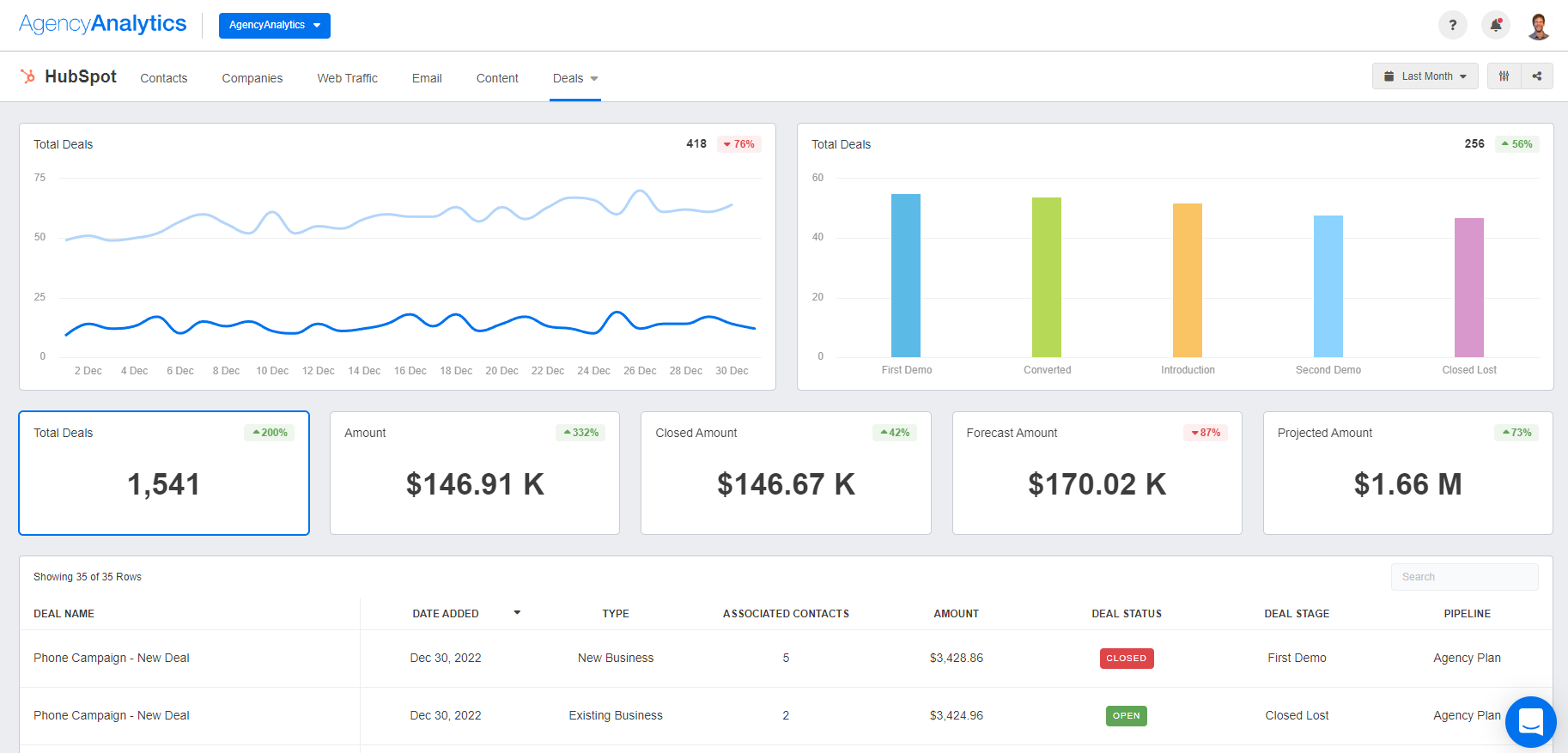
4. Google BigQuery
For clients with larger business operations, consider a cloud-based data warehouse like Google BigQuery. It’s particularly useful for advanced statistical analysis and data management.
Google BigQuery also adheres to data governance, which ensures privacy and security. This is especially useful for clients with sensitive financial data or proprietary information. More specifically, these types of business intelligence tools are handy for:
Large-Scale Data Processing: Effortlessly handle complex data sets, streamline inventory management, and improve operational efficiency.
Custom Querying for Deeper Insights: Use SQL-based queries to analyze data across multiple datasets and make informed decisions.
Real-Time Data Analysis: Process and analyze live data streams to make proactive business decisions based on reliable insights.
Cost-Effective Storage & Processing: Scale as needed without expensive infrastructure costs, paying only for the data your client uses.
Google BigQuery seamlessly integrates with AgencyAnalytics, allowing agencies to centralize data from multiple platforms in one place.
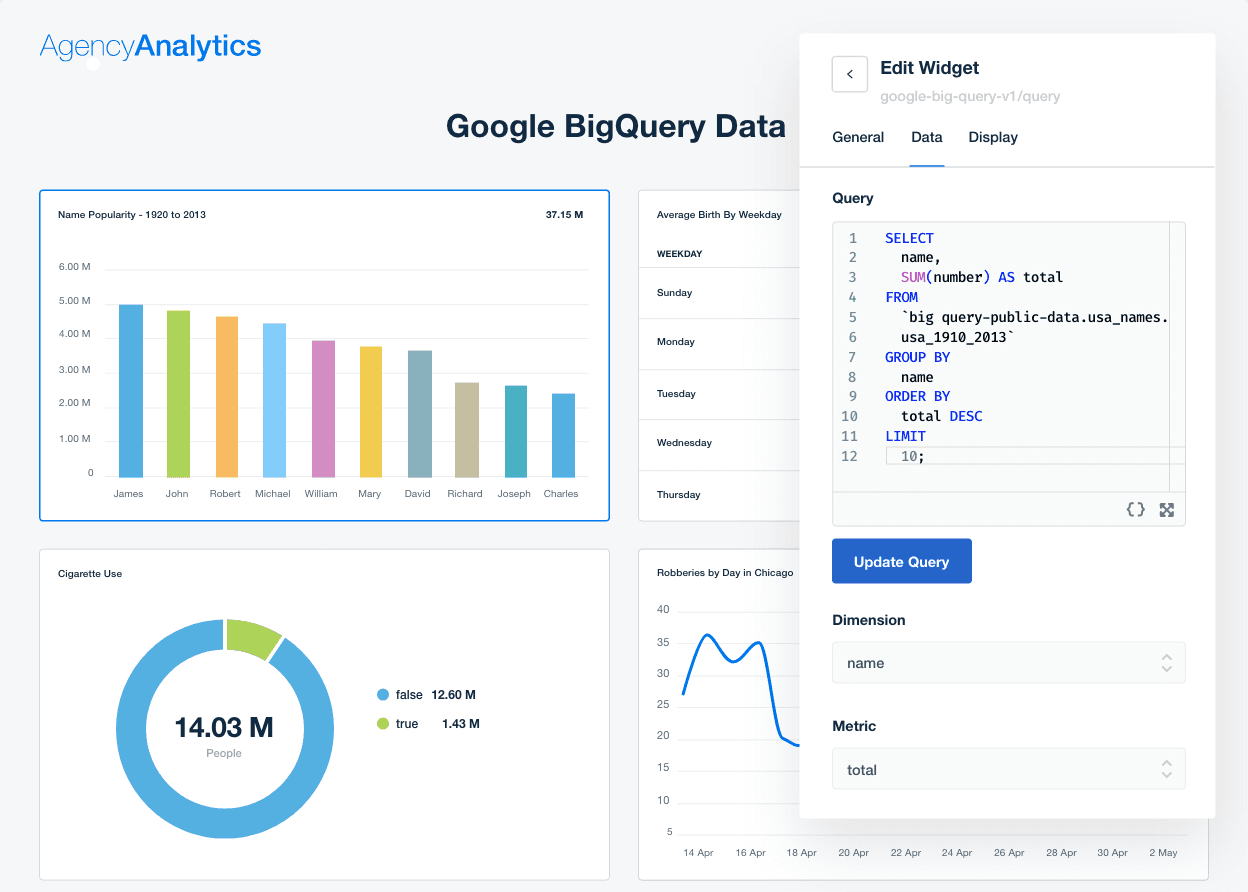
5. ChatGPT
Machine learning models like ChatGPT help uncover data insights, streamline workflows, and create targeted marketing campaigns. Here are a couple of use cases:
Content & Social Media Strategy: Generate blog post outlines, social media captions, and ad variations based on engagement trends.
Ad Optimization: Get AI-powered suggestions for headlines, CTAs, and ad variations to improve engagement and conversions.
Enhanced Personalization: Use ChatGPT to personalize marketing campaigns (e.g., refining landing page copy for specific audience segments).
Automated Cleaning for Enhanced Data Quality: Detect inconsistencies across large datasets for more accurate reporting.
ChatGPT is an excellent complement to any reporting tool. It’s a quick way to automate repetitive tasks, find content inspiration, and extract actionable insights from unstructured data.
Drive Client Results by Leaning on Data-Driven Insights
As we’ve covered, data on its own is just that… data. A bunch of numbers, arbitrary measures of performance–essentially, raw and unsculpted material.
Data-driven insights allow your agency to go from saying, “We think this is working,” to “Here’s exactly what’s driving success.” Realistically, though, you’ve only got so many billable hours in a day. It’s difficult (and painstaking) to manually assess data points across multiple client campaigns.
That’s why the right strategy is needed. For best results:
Define Your Client’s Goal Upfront: Start with clear objectives to ensure every metric analyzed ties back to business outcomes. Whether it’s increasing conversions, improving ROI, or scaling brand awareness, a well-defined focus keeps reporting actionable.
Analyze Trends, Identify Anomalies, and Find Growth Opportunities: Don’t just gather data—look for patterns that reveal what’s working, where adjustments are needed, and how to replicate success.
Use AI To Streamline Data Analysis: AI-powered insights help surface key trends faster, automate reporting, and eliminate hours of manual data crunching. That way, you’ll have more time for strategy and execution.
Invest In A Data-Driven Reporting Tool: A platform like AgencyAnalytics turns raw data into clear, actionable insights—all without the busywork. It’s not built for data scientists, either! Instead, it’s tailored specifically for agency needs, offering intuitive data visualization, integrations across 80+ platforms, and much more.
With AgencyAnalytics, there’s no need to rely on a manual spreadsheet, compile screenshots, or switch between platforms. Instead, everything is in one place, giving you faster insights, better storytelling, and an enhanced reporting experience.
Analyzing data doesn’t have to take all day. Identify patterns, assess user behavior, and quickly share valuable insights–try AgencyAnalytics, free for 14 days.

Written by
Faryal Khan is a multidisciplinary creative with 10+ years of experience in marketing and communications. Drawing on her background in statistics and psychology, she fuses storytelling with data to craft narratives that both inform and inspire.
Read more posts by Faryal KhanSee how 7,000+ marketing agencies help clients win
Free 14-day trial. No credit card required.



